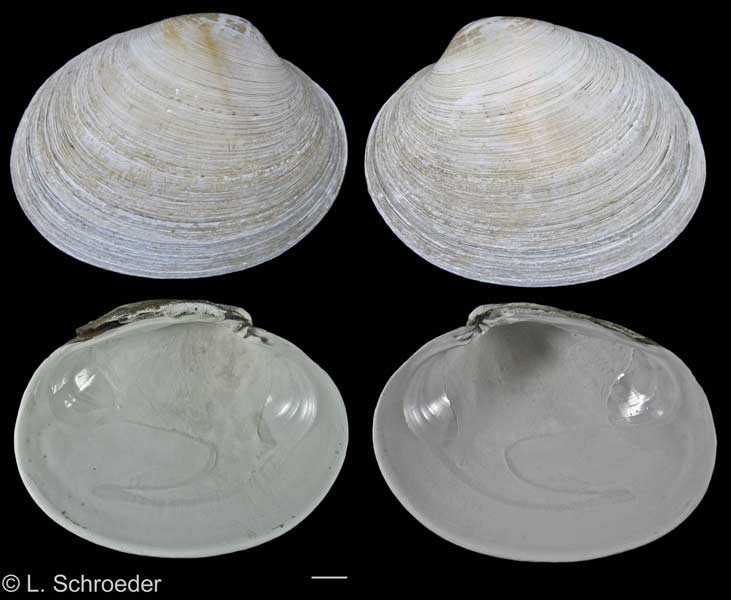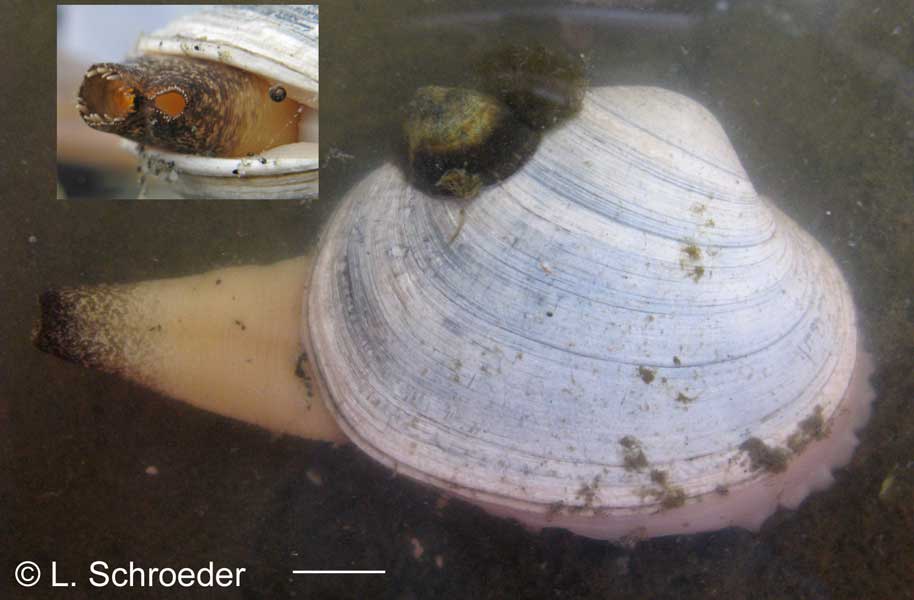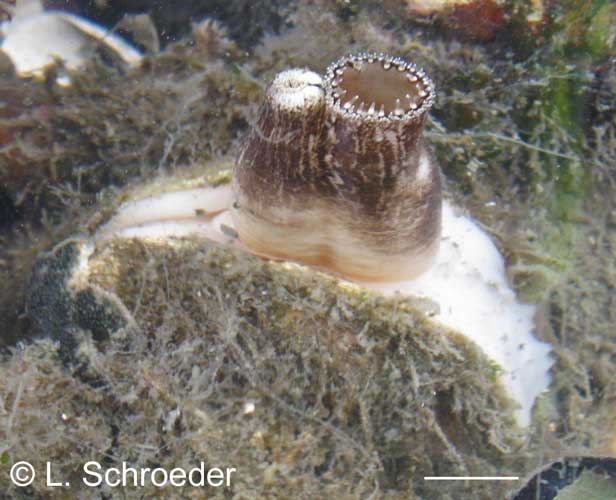Bivalves
Family Veneridae & Petricolidae
Click on photo to enlarge. Scale line in photo equals 1cm unless otherwise specified.
* Species which are commonly encountered on the beach.
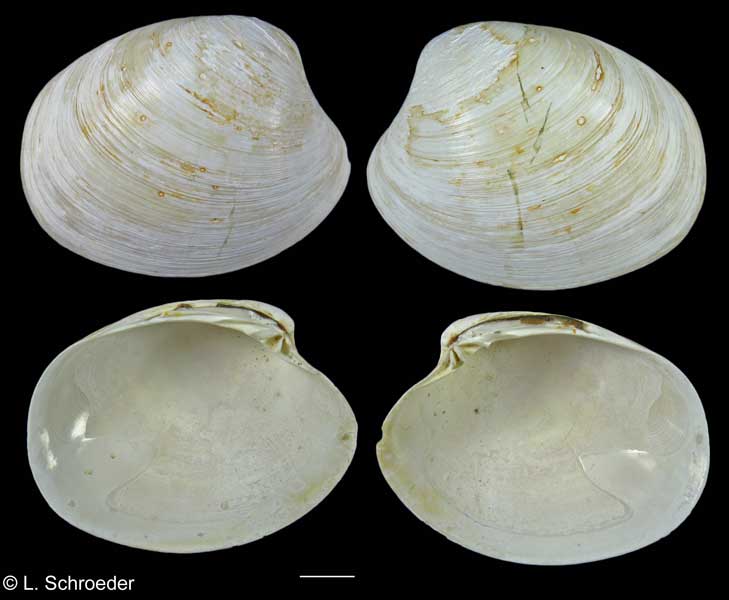 San Juan Islands, WA
San Juan Islands, WA
Compsomyax subdiaphana(Carpenter, 1864)Milky Pacific Venus
subtidal, 2-500m size to 85mm
northern Mexico to southern Alaska
This is a very thin shell with an almost
smooth appearance. The shell has a milky-
white appearance.
(synonyms - Clementia obliqua,
Saxidomus gibbosus)
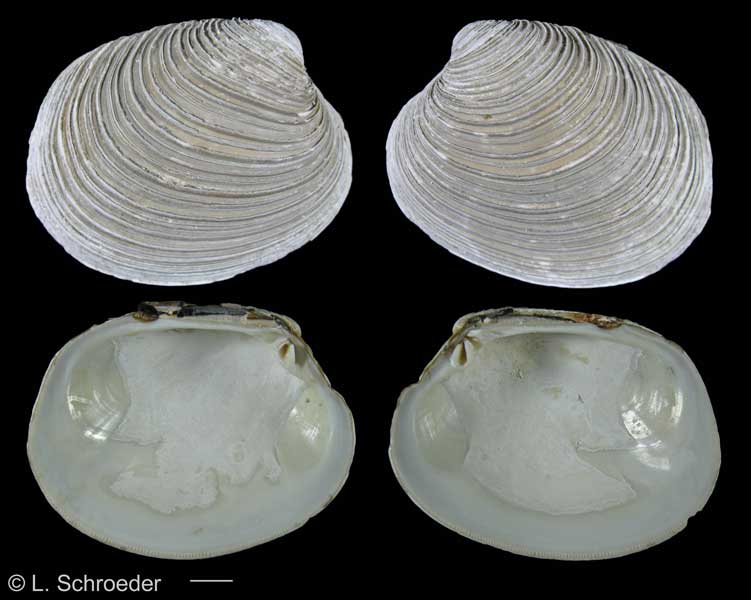 Slip Point, WA
Slip Point, WA
Humilaria kennerleyi (Reeve, 1863)Kennerley's Venus
intertidal to 60m size to 100mm
southern California to southern Alaska
This is infrequently found intertidally. It is a thick,
sturdy shell with sturdy, raised commarginal
ridges. The pallial sinus is very short and pointed.
(previous names - Venerupis kennerleyi,
Venus kennerleyi)
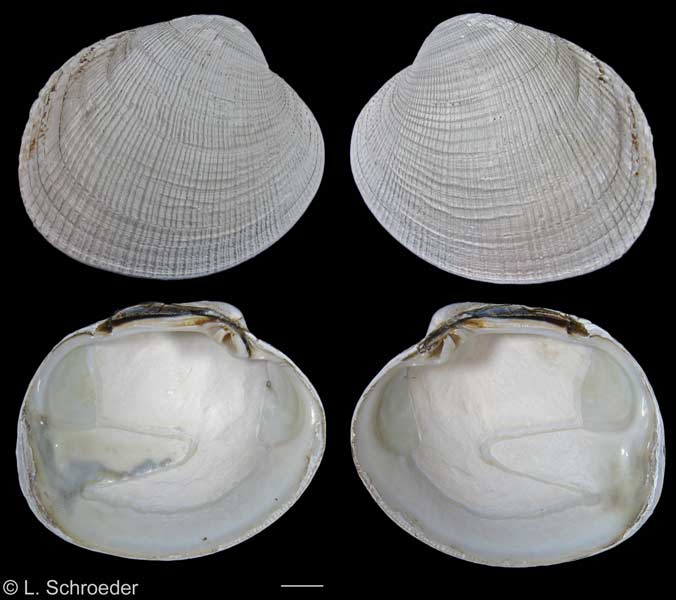
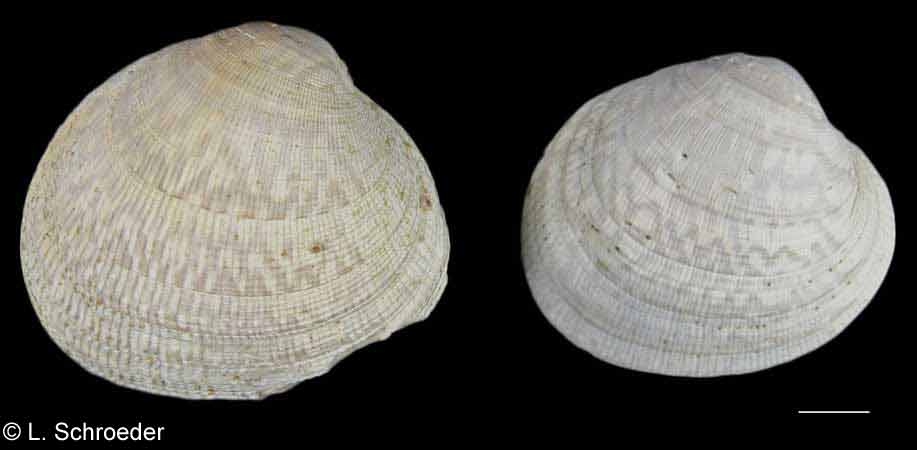 Birch Bay, WA
basketweave pattern copied by Native Americans
Birch Bay, WA
basketweave pattern copied by Native Americans
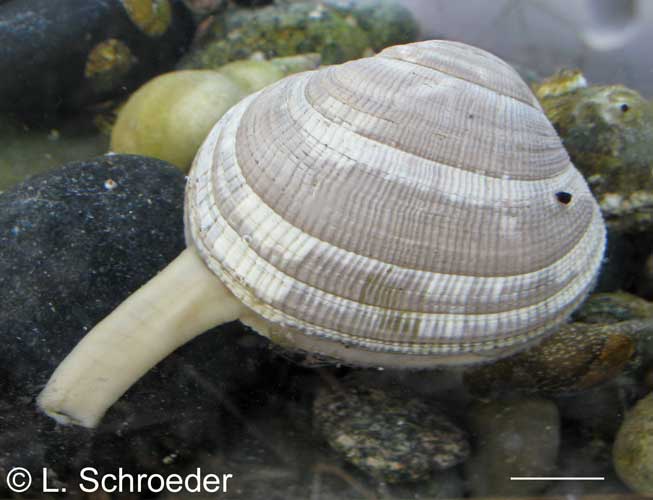
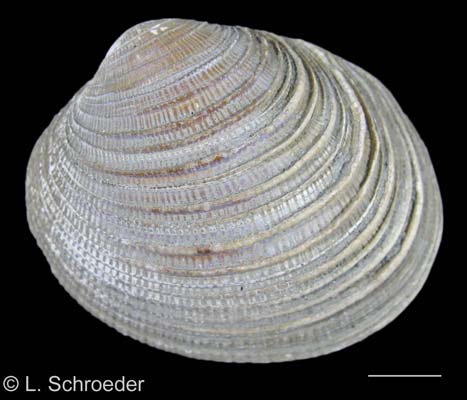
photographed in an
aquarium can become
ridged in some habitats
both - Whiskey Creek Beach, WA
Veneridae
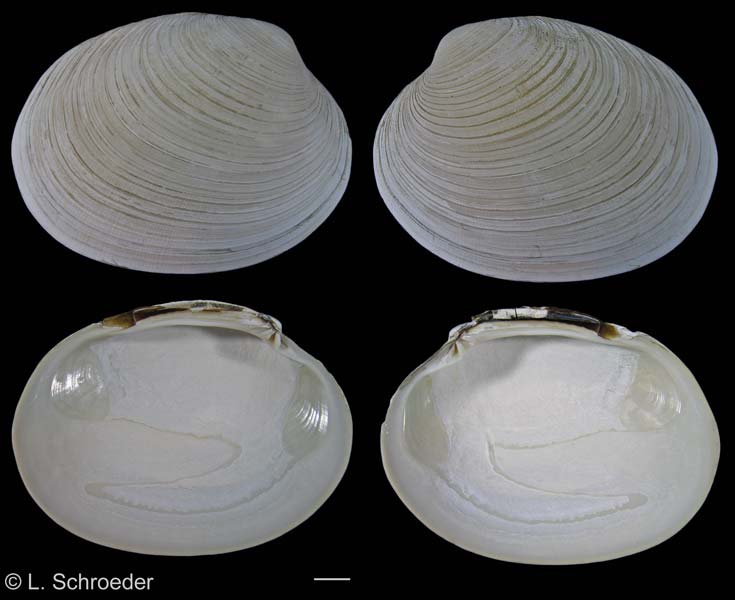
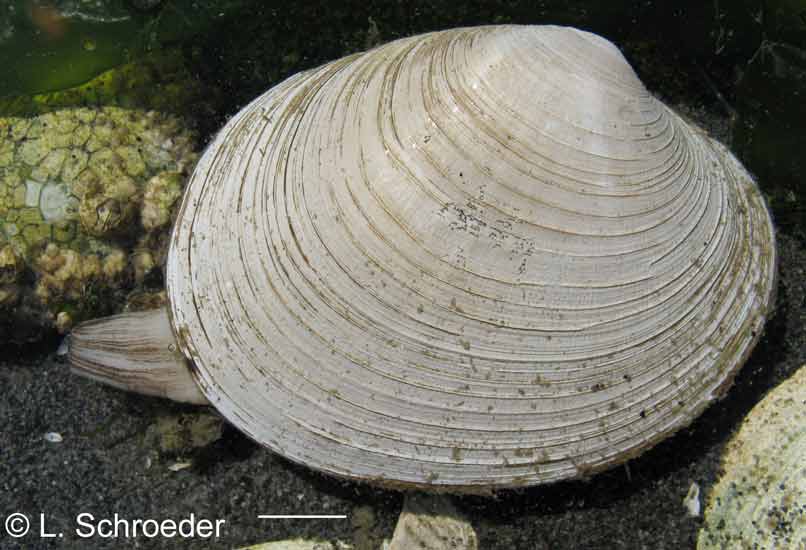
Semiahmoo Spit, WA
Birch
Bay, WA, intertidal
Callithaca tenerrima (Carpenter, 1857)Thin-shell Littleneck *intertidal
to 50m northern Mexico to southern
Alaska size to 160mm
This
is commonly found on sandy beaches. It is large, but thin-shelled
compared to our other Veneridae. It has a sculpture of sharp
commarginal ridges and a thin, flaky periostracum that easily rubs off.
It is one of our largest Venus clams.
(previous names - Protothaca tenerrima, Paphia tenerrima)
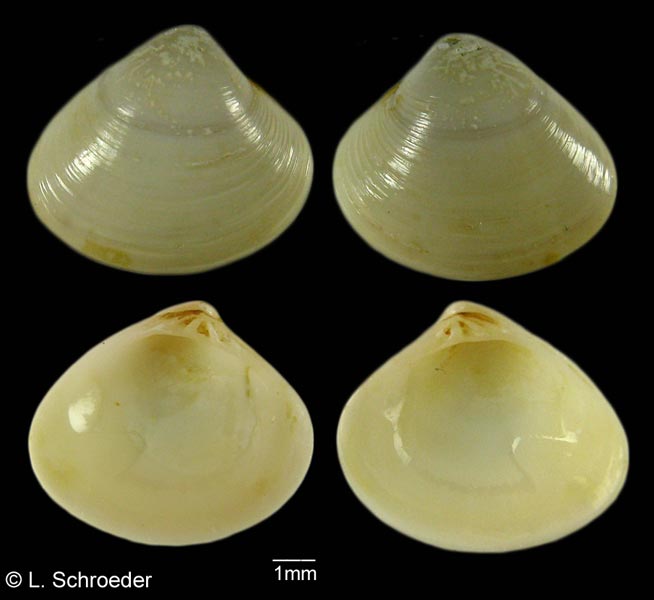 San Juan Islands, WA
San Juan Islands, WA
Nutricola lordi (W.Baird, 1863)Lord Dwarf-Venus
intertidal to 268m size to 8mm
northern Mexico to central Alaska
This can be found intertidally by the diligent
searcher. It's small size makes it difficult to
see. The shell has a highly polished
periostracum and a fairly triangular shape.
(previous name - Psephidia lordi)
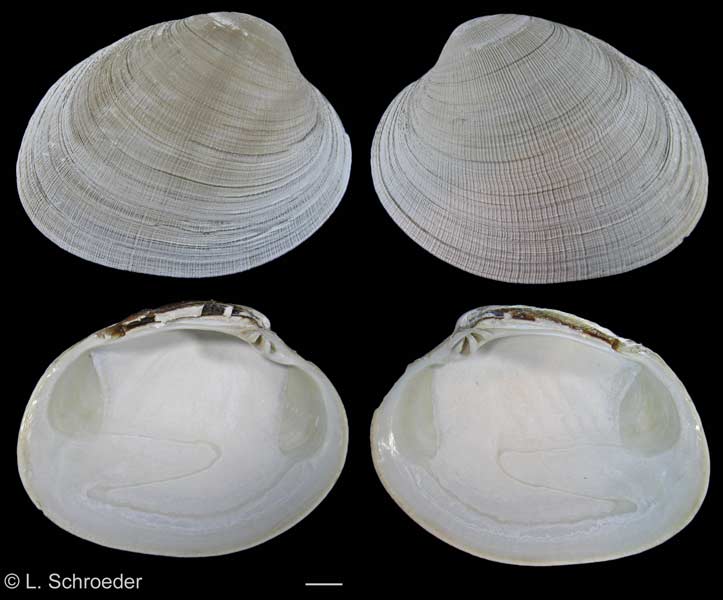 Birch Bay, WA
Birch Bay, WA
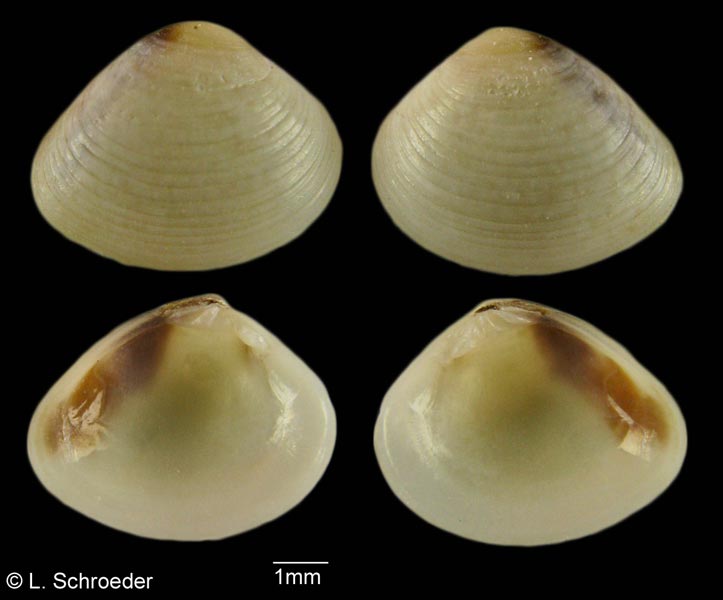 Tofino, BC
Tofino, BC
Nutricola tantilla (Gould, 1853)Purple Dwarf-Venus
intertidal to 120m size to 9mm
northern Mexico to southern Alaska
This is not commonly found intertidally. It
is very similar to N. lordi but has a brown to
purple stain on the posterior side. It also
has a sculpture of low, commarginal ridges.
(synonym - Transennella tantilla)
Leukoma staminea (Conrad, 1837)
Pacific Littleneck Clam *
intertidal to 40m size to 80 mm, but usually much less
northern Mexico to northern Alaska; Japan to Siberia
This
is commonly found intertidally in sand or gravel. It is a popular
steamer clam. The shell is thick and has a cancellate structure.
In some habitats it develops raised
commarginal ridges. It may be a uniform color or have
patches of gray or brown and sometimes in a basketweave pattern. The shell shape can be variable with the habitat.
(previous names - Protothaca staminea, Venerupis staminea, Paphia staminea)
Paphia restorationensis Frizzell, 1930 intertidal to ? California to southern British Columbia size to well over 100mm
This
species is hard to find and so far has only been located in a handful
of locations. The shell is thick and solid, with cancellate
sculpture. It shares characteristics with both C. tenerrima and L. staminea.
This species is under study. It has been considered at times a hybrid, or as a variety of L. staminea but it is uncertain yet where this rare species falls in the taxonomic order. One preliminary DNA test closely allied it with Callithaca. To read more about this species see this article on our site.
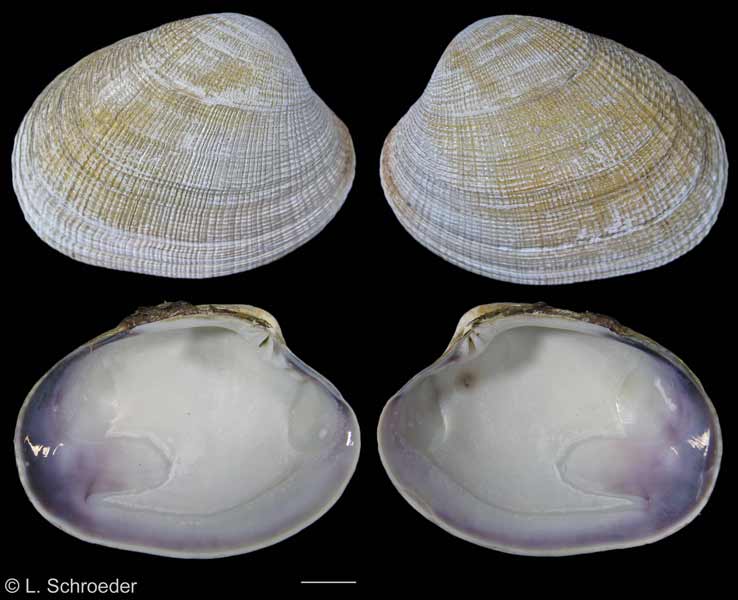
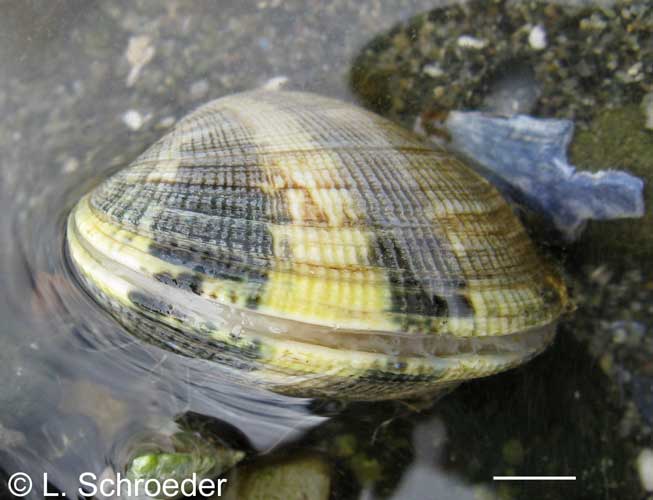
Miracle Beach Park, BC
Oak Bay, WA, intertidal
Venerupis philippinarum (A.Adams & Reeve, 1850)Japanese Littleneck Clam or Manila Clam *intertidal size to 55mm, to 70mm where it is native
central California to northern BC; China to Siberia
Originally from Japan, it was introduced to our coast 100 years ago and it is now completely
naturalized and even commercially harvested. It is common to find and is another popular steamer
clam for diggers. It is similar to L. staminea, but more elongate and with a shallow, rounded
pallial sinus. The interior is often stained purple and can sometimes be yellow. The exterior may
be plain to wildly patterned with stripes and splotches of brown, black or gray
(synonyms - Tapes philippinarum, Ruditapes philippinarum, Tapes japonica)
This page last revised: 5-25-2019
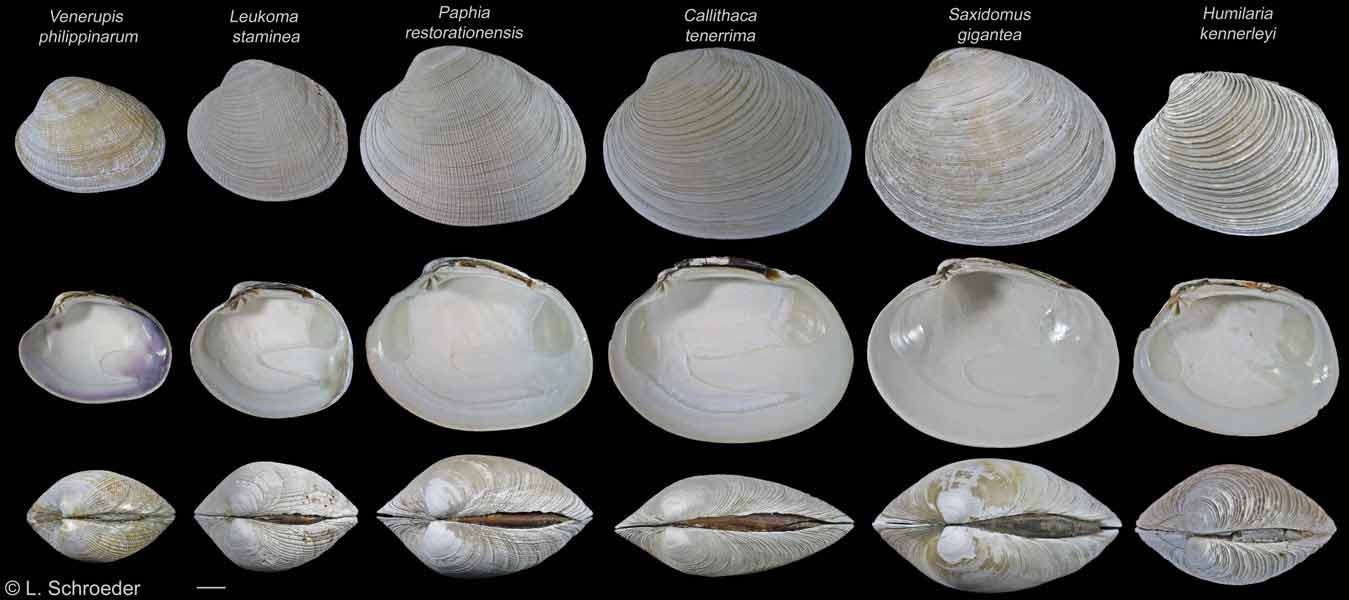 Comparison of the large intertidal Venus Clams of the Northwest
Comparison of the large intertidal Venus Clams of the Northwest
shown to scale at average adult size
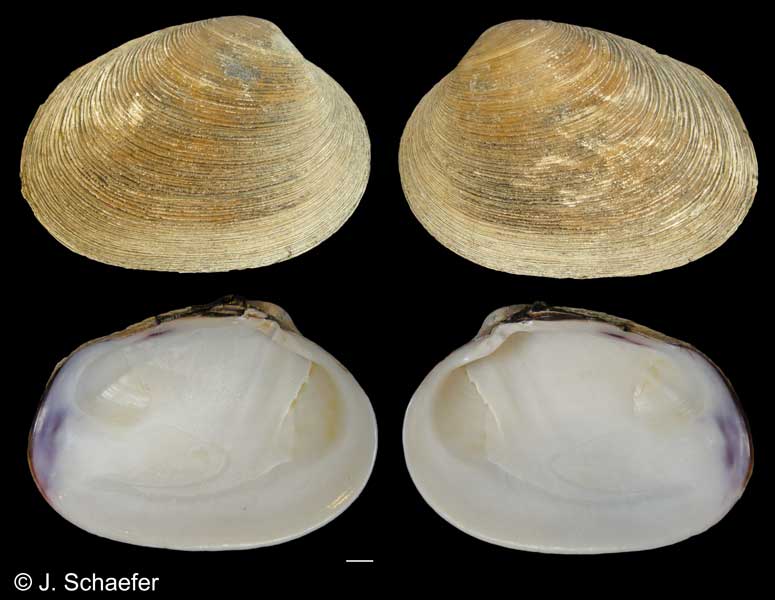 Coos Bay, OR
Coos Bay, OR
Saxidomus nuttalli Conrad, 1837
California Butter Clam
intertidal to 10m size to 150mmnorthern Mexico to southern Oregon
This is mostly a California species but was recently
discovered in Coos Bay, OR. The shell is very similar to S. gigantea. S. nuttalli
typically has prominent commarginal ribbing and a more elongate shape.
It also frequently has purple staining on the posterior which is
very rare in S. gigantea.
Was once referred to as the "Washington Clam", but this was found
to be inappropriate since it does not occur in that state.
Petricolidae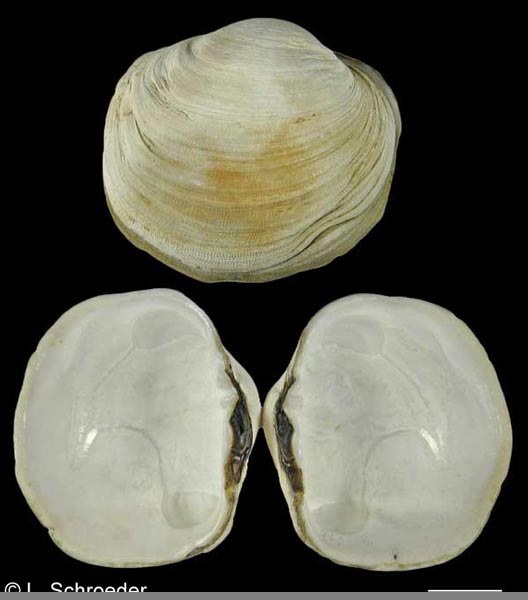
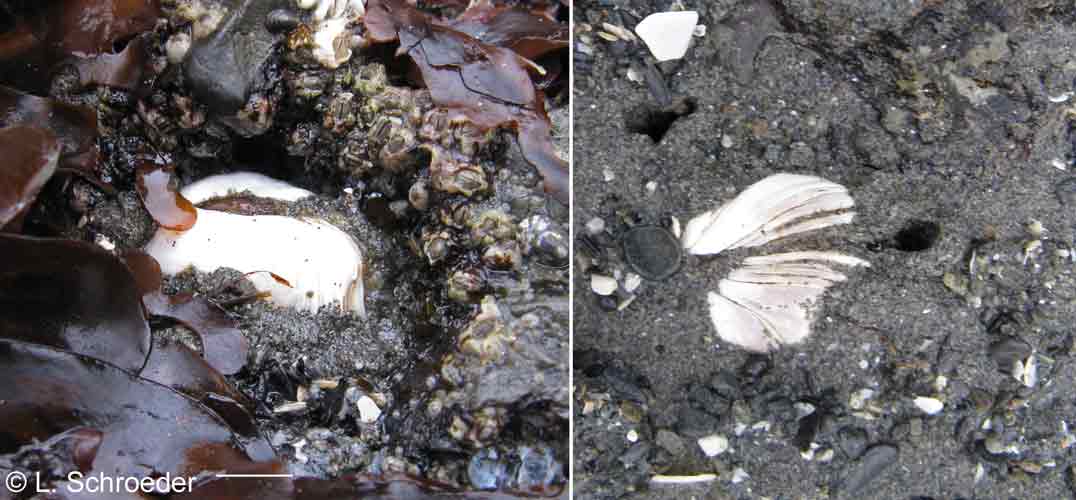
Seal Rock, OR
Ruby Beach, WA, intertidal, live in rock burrows
Petricola carditoides (Conrad, 1837)Hardy Petricolidintertidal to 46m northern Mexico to southern Alaska size to 63mmThis
is occasionally found intertidally. This species lives in empty
pholad holes and other cavities. The shell shape is variable,
depending on the shape of the hole in which it is living. It can
have sculpture of fine radial or commarginal growth lines, but these
are often eroded away.
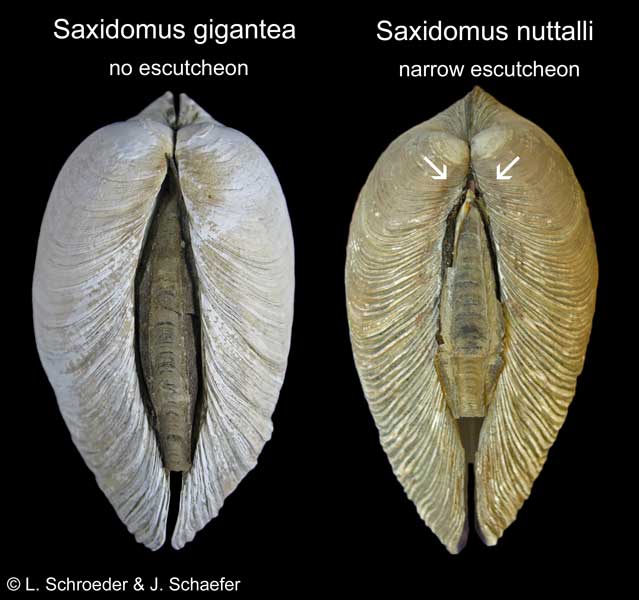 Saxidomus comparison
Saxidomus comparison
Another way to differentiate the two Saxidomus is by the presence of an escutcheon which is a demarcated area around the hinge. S. nuttalli has a narrow escutcheon and it is absent in the S. gigantea. However, in a worn specimen, this might not be especially visible.














